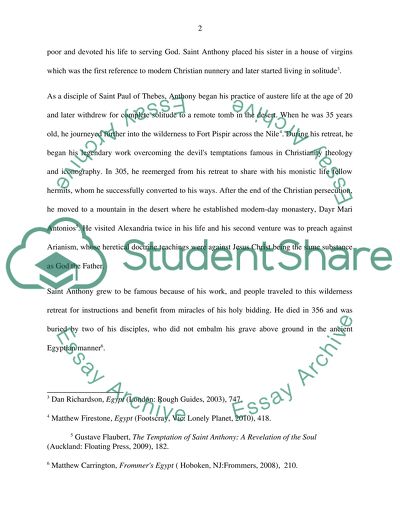Cite this document
(“Saint Anthony of Egypt Research Paper Example | Topics and Well Written Essays - 2000 words”, n.d.)
Retrieved from https://studentshare.org/religion-and-theology/1688153-saint-anthony-of-egypt
Retrieved from https://studentshare.org/religion-and-theology/1688153-saint-anthony-of-egypt
(Saint Anthony of Egypt Research Paper Example | Topics and Well Written Essays - 2000 Words)
https://studentshare.org/religion-and-theology/1688153-saint-anthony-of-egypt.
https://studentshare.org/religion-and-theology/1688153-saint-anthony-of-egypt.
“Saint Anthony of Egypt Research Paper Example | Topics and Well Written Essays - 2000 Words”, n.d. https://studentshare.org/religion-and-theology/1688153-saint-anthony-of-egypt.


